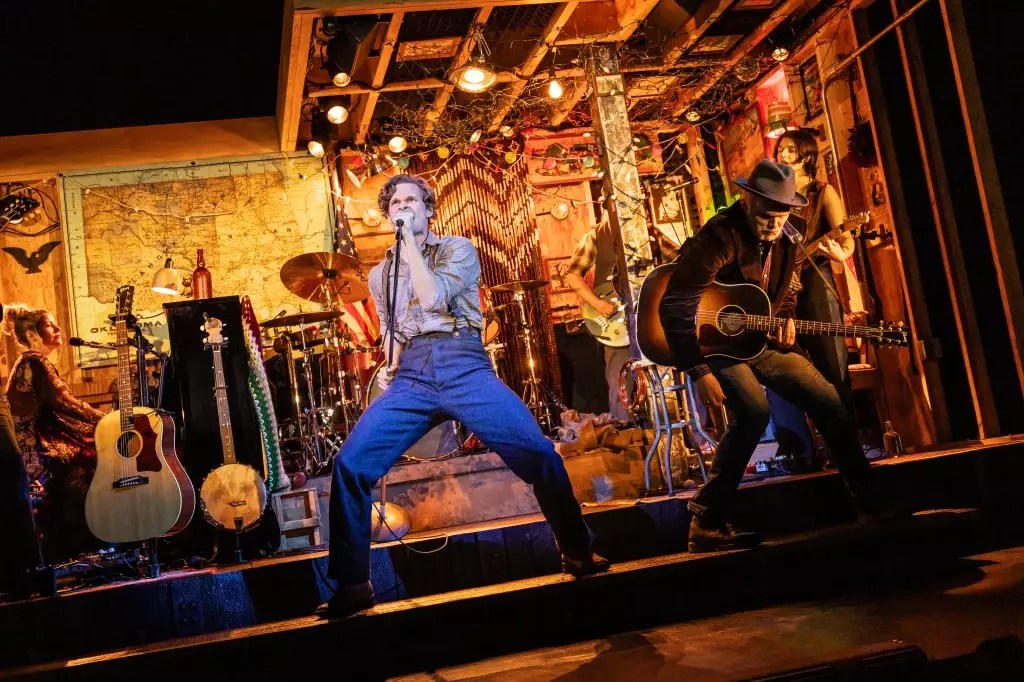Broadway has long been a cultural beacon, reflecting society’s pulse and mood. As the Tony Awards approach and theaters buzz with anticipation, the numbers reveal a tumultuous landscape—a paradox of triumphs and disappointments. The most recent box office data unveils an intriguing narrative about which shows are soaring, which are crashing, and what these trends signify for the industry as a whole. Amid the excitement of nominations and performances, the numbers tell a deeper story that every theatergoer, investor, and artist should consider.
Spotlight on Winners Amid Awards Buzz
As we peel back the layers of Broadway’s current season, it’s clear that not every contender is thriving equally. In the past week alone, approximately 14 shows reported box office slips, while 10 found themselves basking in revenue gains, showcasing a split in audience reception. What’s particularly noteworthy is “Good Night, And Good Luck,” which, with five Tony nominations, notably surged to nearly $4 million. This uptick serves as a reminder that critical acclaim doesn’t just enhance prestige; it translates into ticket sales too. In contrast, titles like “Smash” and “Gypsy” experienced setbacks despite their multiple nominations, emphasizing a precarious balance between artistic recognition and financial viability.
Adding to this unique ecosystem, “Redwood” saw a miraculous uptick in earnings despite being completely shut out of the nominations. The financial gain—an increase of $191,581 for its final week—strikes me as a compelling illustration of how word-of-mouth can outshine awards. While critics may have snubbed the show, audience enthusiasm propelled it towards a profitable close. Here lies a profound lesson: A theater’s soul often resides with its audience, not solely in the hands of critics.
When Fame Meets Fortune: The Anatomy of Ticket Sales
The dynamics of theater attendance tell another compelling story. Many of the shows with standout box office figures boasted sell-out performances, highlighting that not all seats or ticket prices are created equal. With an average ticket price of $131.81 last week, the economic principles of demand and supply are vividly illustrated. High-profile productions, like “Buena Vista Social Club” and “Death Becomes Her,” consistently filled their seats even as they faced the pressures of nominations. Here again, we see that established artists and creative dissidents alike can draw in audiences, yet they thrive in different ways.
Ironically, the increased pricing may alienate a segment of potential theatergoers. While the upscale demographic is important for box office success, the reliance on premium pricing creates a dissonance that reaffirms the perception of Broadway as an elite art form. It’s a double-edged sword; while revenue is boosted, accessibility is constrained. As a center-right liberal, I believe that we must grapple with striking a balance between artistic integrity and broadening theater access to diverse communities.
The Ripple Effect of Nominations and Shutouts
The concept of “nomination effects” runs deep in Broadway. Shows garnering five or more nominations—like “John Proctor Is The Villain”—tend to witness a definite upsurge in box office numbers. Yet one has to question whether this wave of goodwill from accolades is sustainable over time. When shows inevitably leave the spotlight, will the audience depart with them? History has shown that Broadway is not merely a market but a cultural experience that hinges on the intersection of celebrity, storytelling, and audience emotion.
Additionally, we can’t ignore the performances that were overlooked entirely. “Othello,” despite being disregarded for nominations, continued to do well, demonstrating a resilience that speaks volumes about its artistic quality and established audience support. The very existence of these productions challenges the status quo and raises pertinent questions: Are the Tonys too narrow in their focus? Are we missing out on a wealth of talent for the sake of awards?
Broadway’s Future: A Reflection on Trends and Transformations
As Broadway continues to evolve, the interplay between the commercial and critical realms becomes ever more intricate. Recent findings reveal that the entire season’s gross increased by approximately 20% compared to the previous year, a promising indicator for the industry amid prevailing uncertainties. However, the sustainability of this optimism hinges on understanding audience preferences and ensuring the arts remain accessible to diverse demographics.
With evolving perspectives and burgeoning talent, Broadway has the potential to redefine itself in meaningful ways. Traditional models of success are being questioned and critically analyzed. Are we reliant on awards to validate our artistic achievements? Or can a more grassroots approach offer legitimate applause? For those of us who wish to see Broadway thrive, these questions warrant serious contemplation as we celebrate the vibrancy and complexities of the stage.
Broadway’s landscape is as dramatic as the stories it tells. The current state of affairs illuminates undeniable contrasts—triumphs amidst tribulations. As we navigate the final stretches of the awards season, the insights gleaned from box office activities beckon a deeper understanding of the theater’s enduring legacy. Now more than ever, we must embrace a theater culture that is not just profitable but resonant, inclusive, and transformative.


Leave a Reply